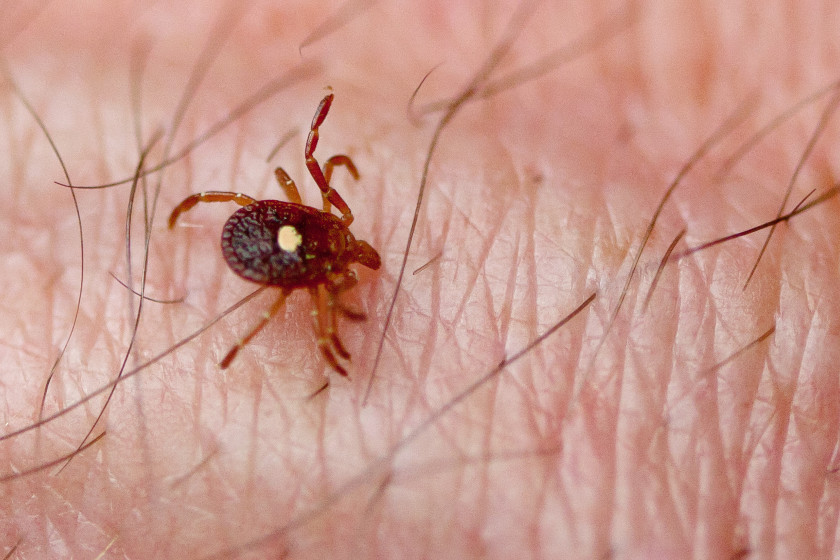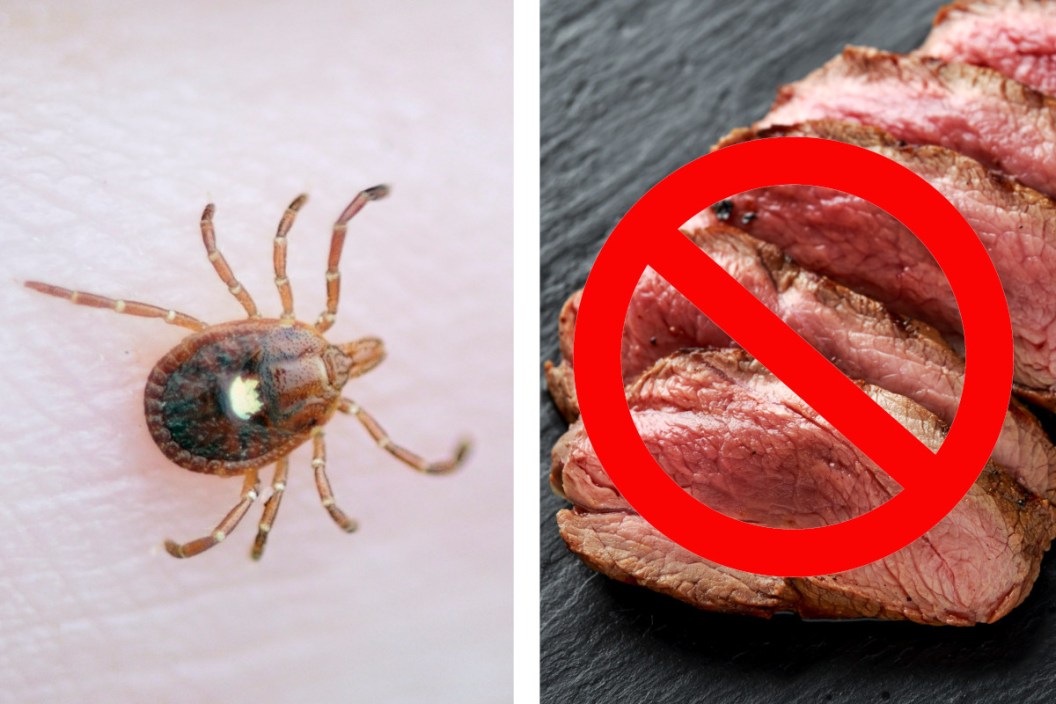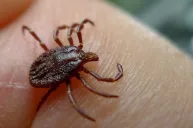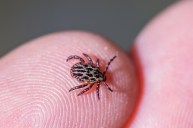Imagine for a moment being told by a doctor you can never eat red meat again because you now have an allergy to it. Now imagine finding out you picked up that allergy while likely participating in your favorite outdoor activities like hunting, fishing, or camping. Sound like a crushing nightmare and something out of science fiction? It's not. It's called alpha-gal syndrome and more people than ever are getting this diagnosis. While practically unheard of a decade ago, this new tick-borne allergy is turning this wild scenario into an epidemic. There are now an estimated three percent of people in the Southeastern United States displaying symptoms. In addition to a red meat allergy that takes things like venison off the menu, alpha-gal also causes allergies to mammal-derived products like gelatin and dairy. For many people, a diagnosis means a total lifestyle change.
While cases are still rare, it doesn't hurt to take some proper precautions if you want to keep enjoying steaks and milkshakes. Luckily, we're learning more about the syndrome, its symptoms, and how to prevent it every day. This is everything you need to know about this unusual disorder and how to avoid getting it.
What is Alpha-Gal Syndrome?

Getty Images: BackyardProduction
Alpha-gal Syndrome is a food allergy specific to red meat and dairy products. That means stuff like beef, pork, and lamb are off the menu. These allergies are caused by our immune systems working in a way that isn't convenient for us. Every day, you are exposed to all types of dangerous things in the environment. From the chemicals and pollutants in the air to harmful bacteria in the soil and our foods, all of these can all cause illnesses.
Luckily, our immune system does a pretty good job of keeping us safe from all the different things we encounter in our day-to-day life. One of the ways our immune system does this is by making antibodies against tiny things like viruses. When special immune cells recognize something new in the body as dangerous, they will create different antibodies as protection if it gets in your body again. Of course, things can go south if your immune system reacts too strongly or reacts to something that isn't bad for you. Mistaking something good for bad is how food allergies happen. For reasons scientists don't quite understand yet, your immune system can sometimes mistake small proteins in the foods we eat as dangerous. If that happens, it may produce antibodies against them, thus giving you an allergy to that food.
Alpha-Gal refers to a specific type of sugar molecule naturally found in cows, sheep, pigs, cats, and dogs. This sugar is usually not a problem when eating meat directly. But when this sugar gets into your body through the saliva of ticks that have fed on these animals, it can cause an allergic reaction. The more you get tick bites that transfer this sugar to your body, the more allergic you can become.
One quick mythbuster, Alpha-gal is NOT a form of Lyme disease, nor is it related in any way to Lyme. This is an entirely different health risk that just happens to join a long line of tick-borne disease and illnesses.
While there is currently no cure for alpha-gal Syndrome, the good news is that it is typically not life-threatening if you are careful with what you eat. For most people with the syndrome, if they have a steak for dinner, they will only experience minor symptoms such as hives, itching, and runny nose. However, in rare cases, someone with a strong reaction to alpha-gal can experience anaphylaxis, a condition where your immune system overreacts to an allergen. If this happens, it can set off a chain reaction of events where blood pressure drops, and cells and organs are deprived of oxygen. This can lead to loss of consciousness and even death in rare cases.
There is one other bit of good news about alpha-gal. For some people it's not permanent. Mayo Clinic reports that the symptoms may disappear over time if a person is not exposed to additional infected tick bites. In fact, they report some people were able to eat red meat again one or two years later. Still, that's a long time to go without a steak. It's best to consult with your doctor for advice on trying red meat again if you've been diagnosed with alpha-gal.
The Steak-Hating Lone Star Tick

Getty Images: epantha
Right now, the main suspect for spreading is alpha-gall is thought to be the Lone Star tick. It's primarily found throughout the southern, central, and eastern United States, according to the CDC. Tick expert Dan Wolff told us unlike some other tick species who wait on blades of grass for a victim to pass by, Lone Stars are hunters who will start crawling towards a potential host when they sense them.
"The Lone Star ticks will detect your breath signature, like the carbon dioxide, and they can maybe see a little bit or detect vibration and they'll come running at you as fast as they can run," Wolff told Wide Open Spaces.
Female Lone Star Ticks are easy to identify because they have a white dot in the middle of their back. Males are little harder to spot since they are a dark reddish color with black streaks. The range of these ticks has expanded in the last decade as they travel on larger animals like deer, cattle, and dogs. Wolff told us he found his first one in Massachusetts on a road killed deer only recently. They are usually found in woodlands with thick undergrowth.
Although the Lone Star is likely the primary spreader of Alpha-gal, the CDC has not ruled out other tick species as spreaders either. There just isn't the scientific data to back that up yet. That means you shouldn't brush off the threat of this allergy simply because Lone Stars aren't common in your area.
Avoiding Ticks Helps Avoid Alpha-Gal

Getty Images: jwilkinson
The easiest way to protect yourself from an Alpha-gal allergy is to avoid tick bites at all costs. Easier said than done since ticks can be rather hard to spot. Don't worry, you can still do some things to protect yourself when going outside. These guys will crawl up on you from the grass or brush off on you as you walk through thick woods or tall grass. Wearing long sleeves and pants can keep them from getting to you. For extra protection, try tucking in your pant legs. You can also use tick repellant bug sprays with DEET. Tick experts like Dan Wolff recommend wearing clothes treated with permethrin to keep ticks off you. Although he also notes the biggest way to avoid tick-borne illnesses is thorough checks every time you come indoors.
"Take off your clothes, throw them in a hot dryer for ten minutes. That will kill any ticks that are clinging," Wolff told Wide Open Spaces. "You can then do your tick check and jump in the shower, and all that helps."
Also, knowing when you're at the highest risk helps. According to the University of Rhode Island, the highest risk of encountering Lone Star Ticks is typically from May through August. Although Wolff told us you should be vigilant all year-round. Ticks can go dormant during colder months and can become active again any time there's a sudden warm-up.
If you do find a tick embedded, don't panic. Use a pair of tweezers to pull it out in one motion. Don't try to burn it off. Put it in a plastic bag or small container and wait a few days to see if you develop symptoms of food allergens or other illnesses like Lyme. Having the tick can help a primary care physician with diagnosis and treatment options.




